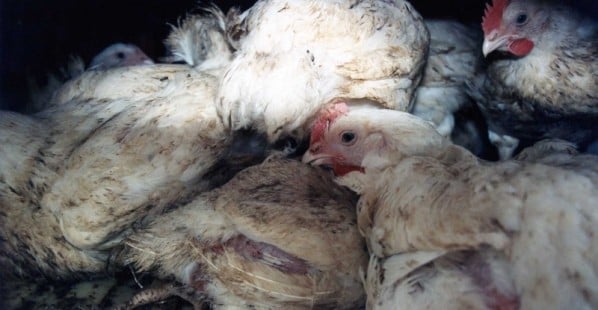8 Ways Declawing Cats Hurts Them
Imagine that you and your brother or sister are goofing around at home when you accidentally scratch him or her. Not really a big deal, right? I mean, you were only playing. But as punishment, your mom decides to have your fingertips removed. Talk about OUCH!
This is a lot like what happens when human guardians take their cats to be declawed. Sadly, most guardians have no idea just how painful and cruel this procedure really is. Here are eight reasons why you should never declaw your feline friend:
1. Declawing cats is the equivalent of cutting a person’s fingers off at the first knuckle.

The procedure involves 10 separate, painful amputations (that means a body part is removed). Bone is removed along with the nails. Um, ouch.
2. Clawing is a natural, healthy, and important behavior.
 Loki | Matt | CC BY-NC-SA 2.0
Loki | Matt | CC BY-NC-SA 2.0
Before they started living with humans, cats would satisfy their need to scratch by clawing tree trunks. Cats claw to exercise, keep their nails in good condition, stretch their muscles, and simply enjoy themselves.
3. Declawed cats often become more aggressive.

Getting cats declawed will not make them safer around babies and children. In fact, removing a cat’s claws makes many cats feel so insecure that they bite more in order to protect themselves.
4. Claws are the first line of defense for cats.

You probably already keep your cats indoors at all times, but if they were ever to sneak outside, they would be in much more danger of being hurt or even killed by predators and cruel people without claws to protect them.
5. Pain continues after the surgery.
Cats are in pain when they wake up from the surgery, and this continues afterward. Nails may grow back inside the paw, causing them even more pain. Can you imagine hurting but not being able to tell your family?
6. Declawed cats are more likely to go potty outside the litterbox.
Without claws, even housetrained cats might start “doing their business” in places other than the litterbox in an attempt to mark their territory.
7. Declawed cats have to relearn how to walk.

Our toes are very important for our balance, and it’s no different for cats! After the procedure, declawed cats have to relearn how to walk, just like a person would after losing his or her toes.
8. Many countries have already banned declawing.

Declawing has already been banned in England and parts of Europe. West Hollywood, California, was the first city in the U.S. to ban it (and several other cities in California have followed suit).
What Your Family Can Do Instead
- Ask your parents to trim your cats’ nails regularly. When your feline friends are relaxed and unafraid, have your parents gently press on their toes until the claws extend. They can use a pair of kitty nail clippers to cut only the tip of each nail, taking care not to damage the vein (or “quick”). The nail hook is what tears furniture, so removing it can prevent damage to household items.
- Have your parents put out multiple scratching posts. It’s best to have two or more scratching posts in your home for your cats. Make sure that they’re sturdy and tall enough to allow your kitties to stretch (3 feet or taller). Soft, fluffy carpeted posts won’t fulfill your cat’s clawing needs, so ask your parents to look for rough posts.
- Ask your parents to pick up cardboard scratching boxes. They’re inexpensive and small enough to scatter around the house, giving your cats plenty of places to scratch at all times. These boxes wear out quickly and need to be replaced every few months, or cats will move on to other items.
- Teach your cats where to scratch and where not to scratch. Encourage your cats to use the scratching posts by sprinkling catnip on the posts once a week. Discourage them from scratching furniture by using a loud, firm voice—cats don’t like loud noises! Never use physical force. Instead, use a toy to distract your cats from the furniture. Dangle the toy over a scratching post and praise them when they scratch the post instead. As a last resort, you might try using a squirt bottle to spray a little lukewarm water at their backs when they scratch the furniture. Be sure not to spray them in the face—it’s not nice!
Get Creative for Cats

Teaching your family why declawing cats is cruel will certainly help any felines who live with you, but you can be a hero to even more cats by sharing this important information with your whole community—just like 11-year-old Heidi Hooks did. Heidi is a Girl Scout in Travis, TX, and when she was tasked with coming up with a creative solution to a problem she cared about for her Take Action project, she got in touch with PETA Kids for help. After learning that declawing cats causes them to suffer, Heidi was inspired to write a poem from the point of view of a cat, explaining that they need their claws and that removing them is painful for them. Heidi then created these beautiful leaflets using her poem and passed them out to her neighbors so they could all learn about the many alternatives to declawing cats. Way to go Heidi!
Why should we put someone we love through the misery of being declawed if we don’t have to? The answer is simple: We shouldn’t!




Under 13? Ask your parents bee-fore you continue!